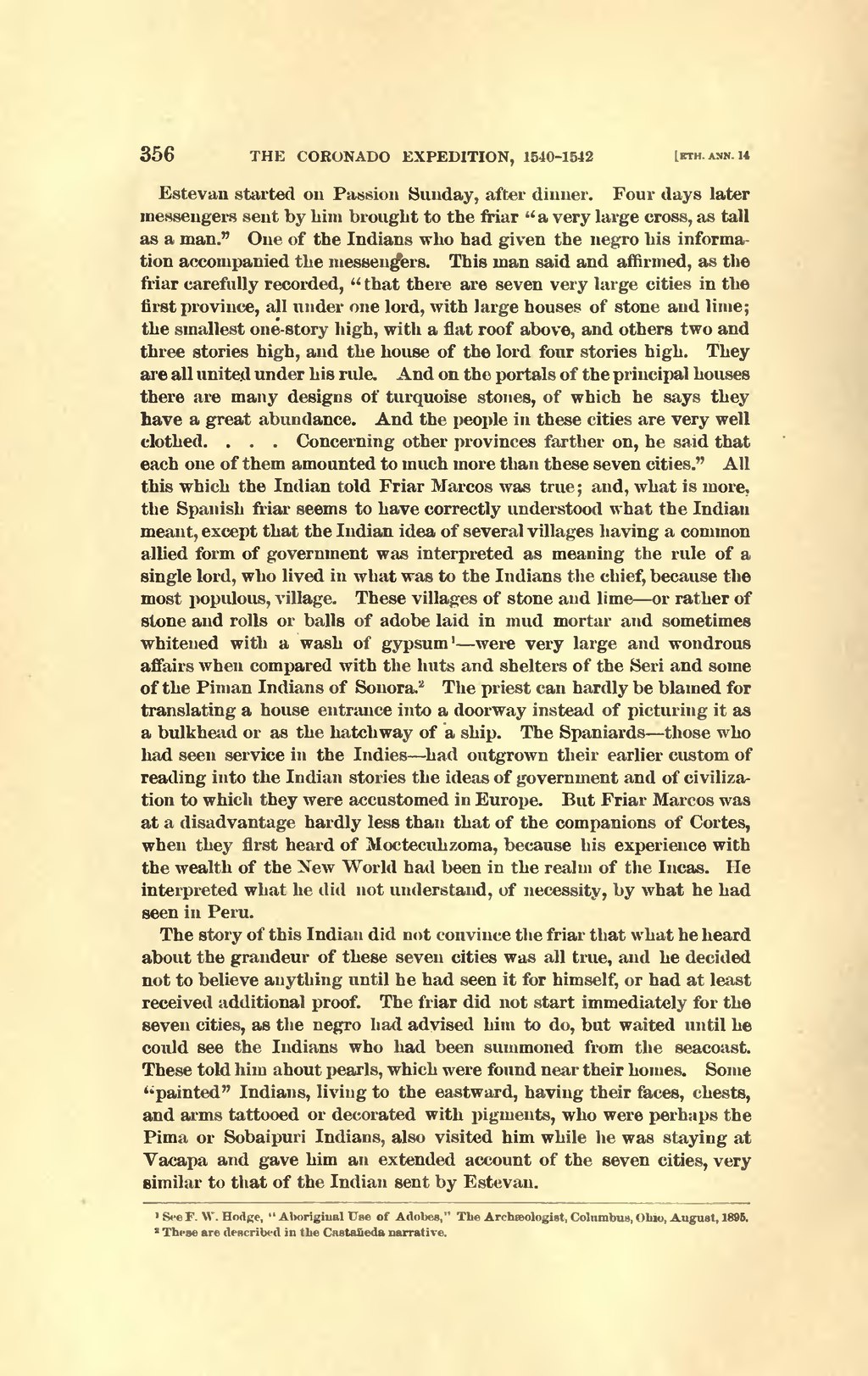Estevan started on Passion Sunday, after dinner. Four days later messengers sent by him brought to the friar "a very large cross, as tall as a man." One of the Indians who had given the negro his information accompanied the messengers. This man said and affirmed, as the friar carefully recorded, "that there are seven very large cities in the first province, all under one lord, with large houses of stone and lime; the smallest one-story high, with a flat roof above, and others two and three stories high, and the house of the lord four stories high. They are all united under his rule. And on the portals of the principal houses there are many designs of turquoise stones, of which he says they have a great abundance. And the people in these cities are very well clothed. . . . Concerning other provinces farther on, he said that each one of them amounted to much more than these seven cities." All this which the Indian told Friar Marcos was true; and, what is more, the Spanish friar seems to have correctly understood what the Indian meant, except that the Indian idea of several villages having a common allied form of government was interpreted as meaning the rule of a single lord, who lived in what was to the Indians the chief, because the most populous, village. These villages of stone and lime—or rather of stone and rolls or balls of adobe laid in mud mortar and sometimes whitened with a wash of gypsum[1]—were very large and wondrous affairs when compared with the huts and shelters of the Seri and some of the Piman Indians of Sonora.[2] The priest can hardly be blamed for translating a house entrance into a doorway instead of picturing it as a bulkhead or as the hatchway of a ship. The Spaniards—those who had seen service in the Indies—had outgrown their earlier custom of reading into the Indian stories the ideas of government and of civilization to which they were accustomed in Europe. But Friar Marcos was at a disadvantage hardly less than that of the companions of Cortes, when they first heard of Moctecuhzoma, because his experience with the wealth of the New World had been in the realm of the Incas. He interpreted what he did not understand, of necessity, by what he had seen in Peru.
The story of this Indian did not convince the friar that what he heard about the grandeur of these seven cities was all true, and he decided not to believe anything until he had seen it for himself, or had at least received additional proof. The friar did not start immediately for the seven cities, as the negro had advised him to do, but waited until he could see the Indians who had been summoned from the seacoast. These told him about pearls, which were found near their homes. Some "painted" Indians, living to the eastward, having their faces, chests, and arms tattooed or decorated with pigments, who were perhaps the Pima or Sobaipuri Indians, also visited him while he was staying at Vacapa and gave him an extended account of the seven cities, very similar to that of the Indian sent by Estevan.
